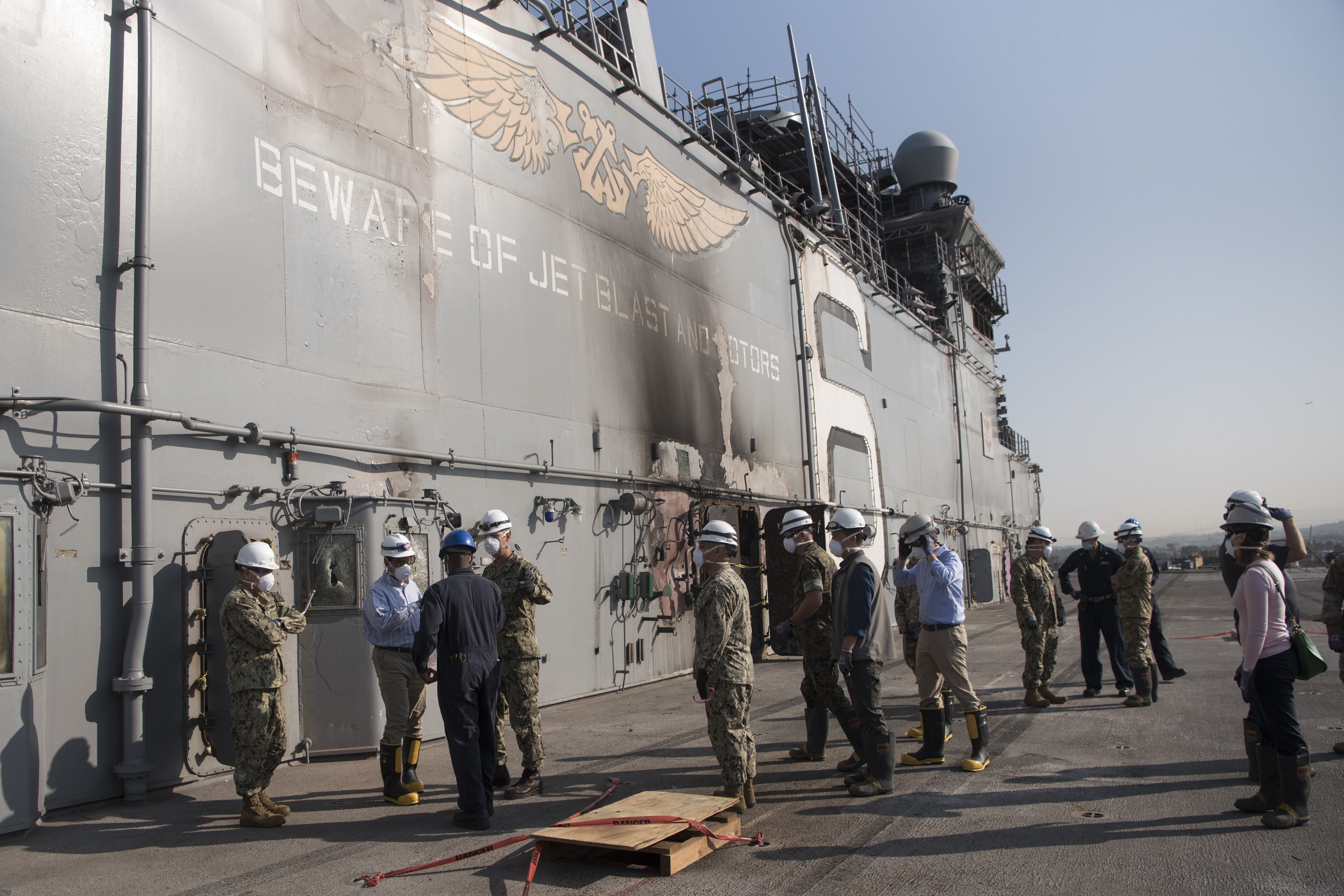
NAVAL BASE SAN DIEGO, Calif. – USS Bonhomme Richard (LHD-6) hasn’t moved from the pier-side spot where it caught fire on July 12 and burned for almost five days. The ship might not be moving anytime soon. Investigations into the fire have been extended until at least until December, USNI News understands, and with them any decisions about the fate of the ship.
Still, with the ship still hot enough to need cool air pumped inside, the crew has settled into a new normal, spending their duty rotations helping clear out the amphibious assault ship and offload equipment that can be salvaged and put back into the Navy supply system.
USNI News was one of the first news outlets to see the ship on the pier since the fire occurred. Reporters were not allowed on Bonhomme Richard itself and were not allowed to photograph the ship. The port side has already been repainted to protect the steel hull, with little damage visible from the pier aside from missing portions of the superstructure. The view from the Coronado Bridge – with the charred starboard side and flight deck visible from the highway – is a reminder of this summer’s blaze.
Rear Adm. Philip Sobeck, the commanding officer of Expeditionary Strike Group 3 in San Diego, said during the tour that 25 firetrucks crammed onto the pier, more than 400 sailors rushed in to help, and assistance came in from all the federal and local fire departments – fighting a fire that included thick smoke, some explosions on the ship, and heat as high as 1,200 degrees Fahrenheit.
“The teamwork was absolutely amazing,” he said.
“We had the hull cooled: we had spigots and hoses that were just on the hull. We had the [firefighting] tug. And then the same folks that are fighting the California fires, HSC-3 and their teams, were dumping over 1,500 different buckets on top. The heat was anywhere from 85 to 1,205 at different points, and these guys didn’t know, one side of the bulkhead it would be 800, you turn around and go down and all the sudden it would be up to almost 1,000 degrees. So everything was flashing. Some of the questions have been, it’s a ship, it’s a steel ship, how does it burn? At a certain temperature, everything burns.”
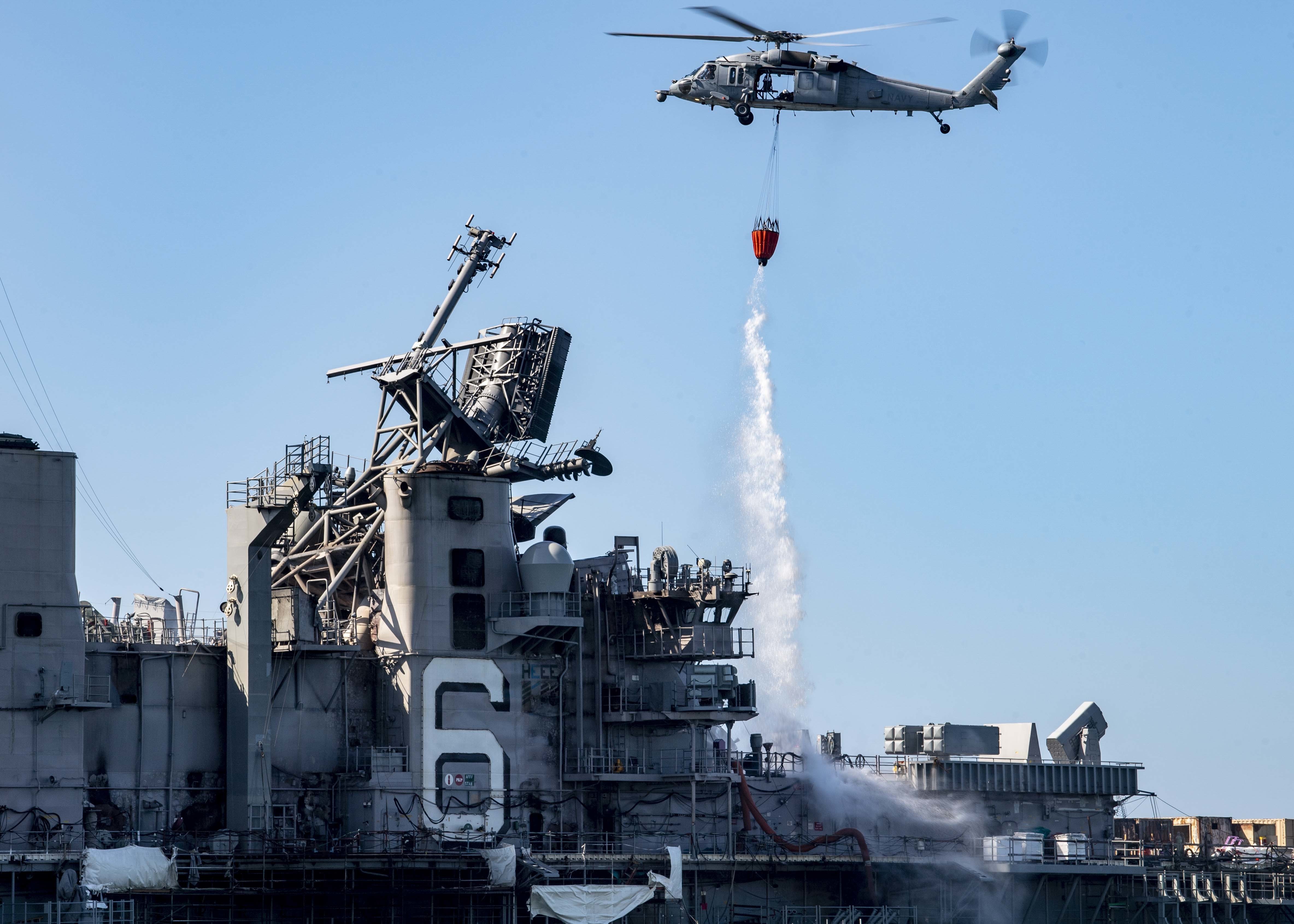
Given the heat of the fire and the massive amount of water needed to put it out over the course of five days, the damage is extensive. Sobeck and other Navy officials declined to comment on the damage or the ongoing investigations, but the admiral did say that most of the computer systems on the ship were destroyed in the fire.
Bonhomme Richard was nearing the end of a maintenance availability that included significant modernization, including the addition of systems to allow the ship to support the F-35B Joint Strike Fighter.
Because so much work had been done to the ship in the year-plus of maintenance before the fire, “there’s plenty of things that we can preserve and we can get off to make sure – electronic equipment or whatever else – so we can kind of keep and use it further on, either for her or for other ships,” Sobeck said.
“We’re not dismantling Bonhomme Richard at all, we’re just preserving what we can,” he clarified.
“The things that you can plug and play, we’re using that for other class ships, other things, and keeping sort of the supply system going.”
He likened the damage inside the ship to that of a town hit by a tornado: one side of the street might be totally devastated, while on the other side of the street houses are still standing. He said the maintenance contractor, General Dynamics NASSCO, along with the Navy are still going space by space to determine what is still functional and what was ruined by fire or water.
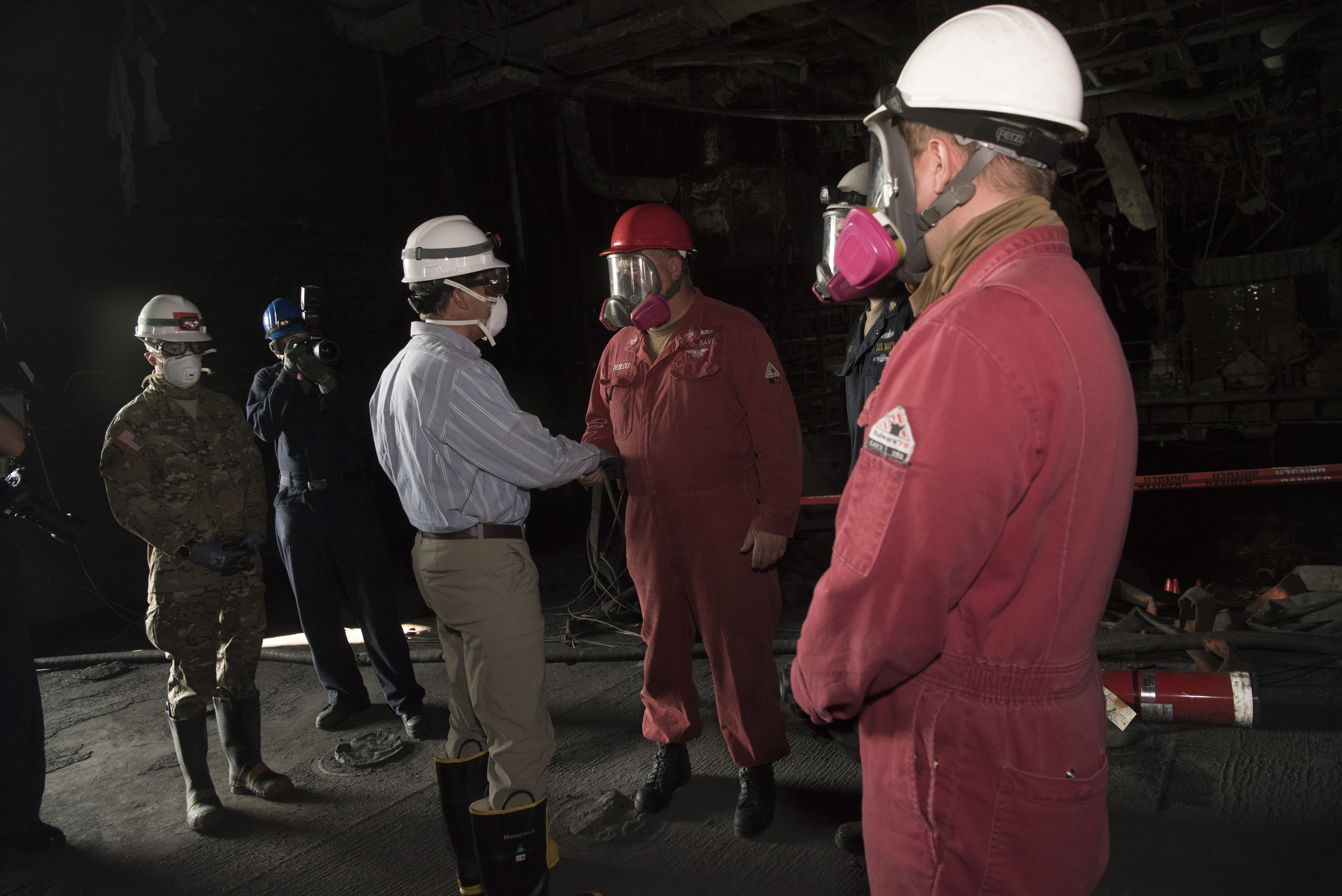
The flight deck is still surrounded by scaffolding, which Sobeck said is from the original maintenance availability and not from fire clean-up. Just days before the fire broke out, the crew had been preparing to move back aboard the ship and getting ready to enter the next phase of maintenance and training.
Now, instead of wrapping up maintenance, the crew and contractor are “doing maintenance activities, but at this stage now it’s more debris removal and understanding and supporting the investigation, supporting the recovery aspects and the equipment, making sure what whatever we can preserve is preserved and materially sound.”
Four investigations are taking place in parallel: a Naval Criminal Investigative Service (NCIS) criminal investigation, which now includes the Bureau of Alcohol, Tobacco, Firearms and Explosives (ATF) – though Sobeck and others made clear they could not speculate on the scope of that investigation.
Naval Sea Systems Command is conducting two investigations: a failure review board, which will look at safety, structural and design issues related to the ship and how changes could be made to prevent a fire from moving through the hull the way it did on Bonhomme Richard; and a safety investigation board to examine the events that look place on the ship leading up to the fire compared to existing policies and procedures.
Vice Adm. Scott Conn, the commander of U.S. 3rd Fleet, is also leading a command investigation.
Sobeck said ESG-3 is supporting all the investigations and that, while each is taking place independently, they also feed off each other in a way that makes them likely to be completed around the same time.
Earlier this month, U.S. Pacific Fleet Commander Adm. John Aquilino notified Navy leadership the command investigation would extend into December, two Navy officials confirmed to USNI News.
Naval Surface Force Pacific spokeswoman Lt. Cmdr. Nicole Schwegman said she could not say when the investigations would conclude but that it would likely be by the end of the year, rather than spilling into 2021.
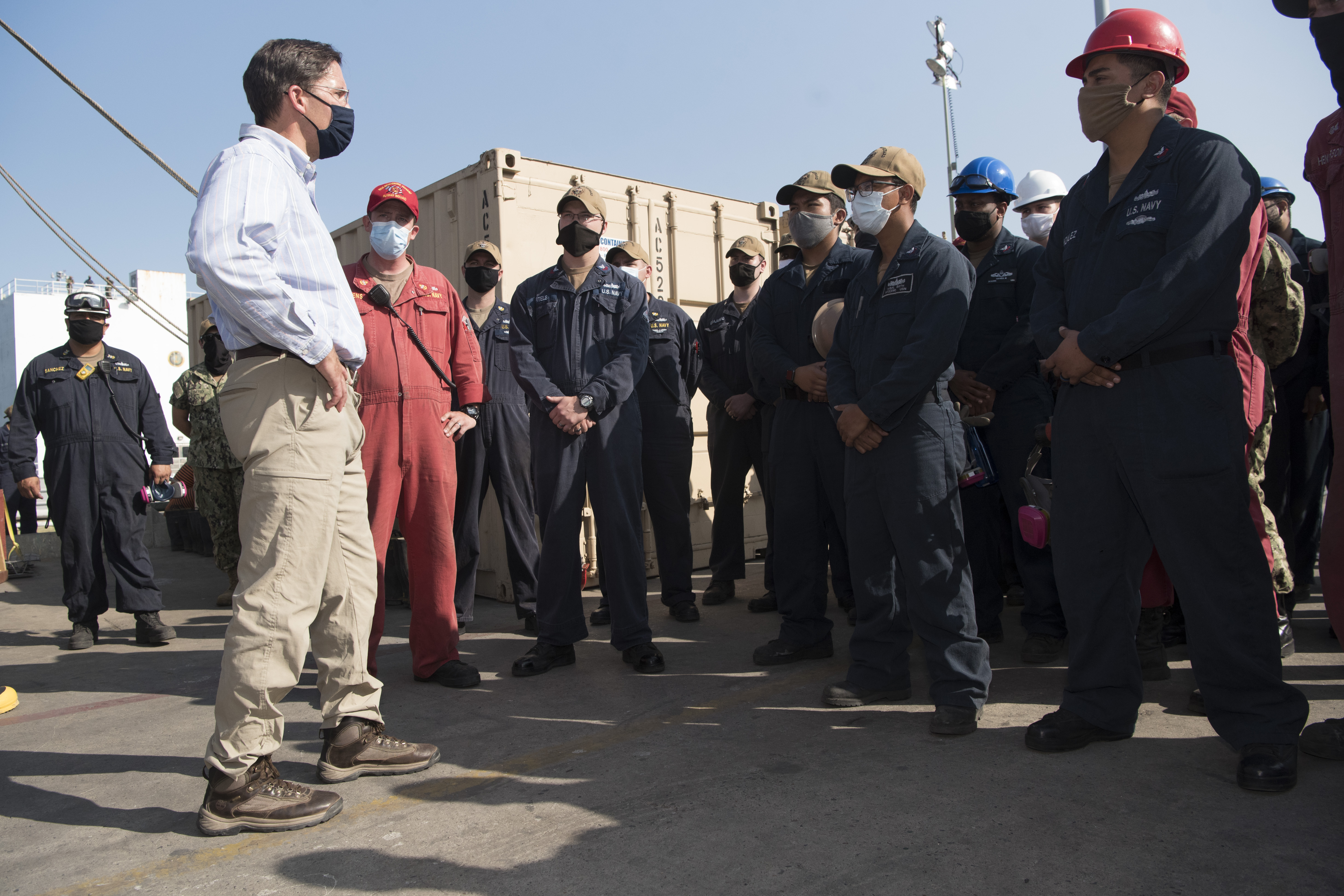
Whether the investigations ultimately lead to the Navy deciding to try to repair the amphibious assault ship or decommission it, what Sobeck and others made clear was that there wouldn’t even be a hull to attempt to save if not for the heroic efforts of sailors across the San Diego waterfront and federal and local firefighters across the region.
Aviation Boatswain’s Mate (Handling) 2nd Class Hayley Craig told USNI News on Friday that she went into the fire eight times between when the blaze broke out Sunday morning and when it was declared extinguished on Thursday.
“What it was like in the beginning: I’m not going to lie, I was scared, I think everybody was. And then you couldn’t really see nothing. It was incredibly hot; I didn’t know your body could take that much heat. And then towards the end of it, when everything started settling down, it was just – it was unrecognizable to me, and I’ve been here for a long time, so that should just tell you how crazy everything was in the moment,” she said.
Craig joined the crew of Bonhomme Richard in October 2017, her first ship assignment after completing new sailor training. She spends most of her time in and near the hangar bay and flight deck.
“Even areas that I myself was familiar with, when I had took Fed Fire where they needed to go [during one of her eight entries into the fire], I was disoriented. Everybody was. You couldn’t tell what was this far in front of you and who was in front of you and where you were, so just chaos,” she said.
“But we got it took care of and didn’t nobody die, so that’s the biggest win. And everybody made it out of there because we all worked together. It was all-hands evolution … It was everybody – outside forces and then ourselves – everybody, the crew, that put in that work and fixed a problem.”
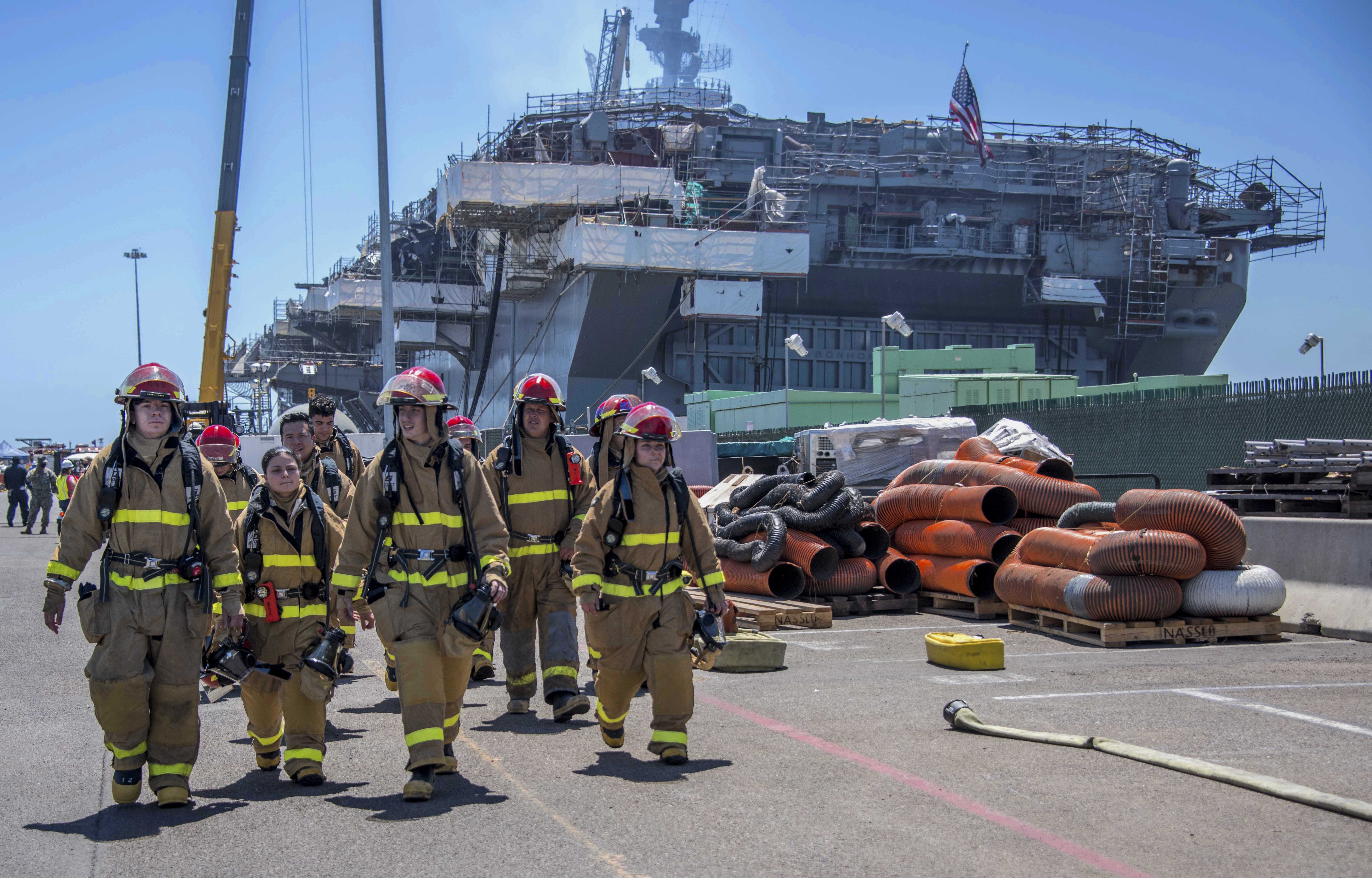
Craig, who grew up in Indiana and said she had never seen the ocean until she reported to her job on Bonhomme Richard, praised the entire crew – and all the other ship crews that sent damage control teams, other individual sailors who ran over, and all the firefighting agencies – for the teamwork that saved the ship she’s called home for three years.
Craig smiled at that notion: “I think that’s an odd question when people ask that, why did you go in and everything. It’s our job, it’s what the Navy pay you to do and train you to do.”
She did note that, while she’s still in her first tour in the service and had to deal with the worst ship fire the Navy has had in recent history, the fire might have come as even more of a shock to some of her fellow sailors: “I remember I was sitting there in the theater [where medical triage was set up], and there was a guy next to me, it was his first duty day. He had only been on the ship for like a week. I was like, that’s a hell of a duty day, man.”
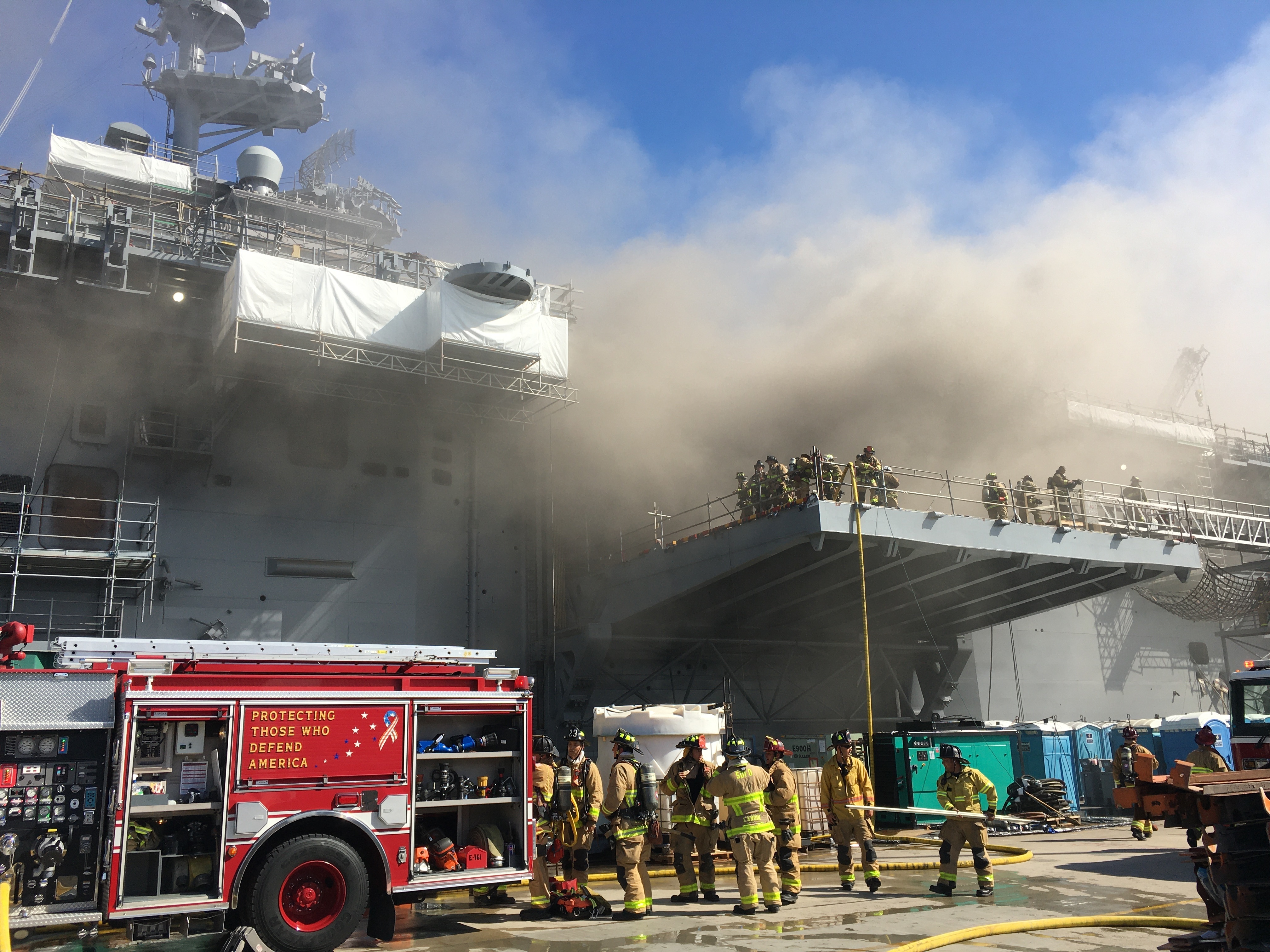
Sobeck acknowledged that the great length of the fire was a struggle. USNI News previously reported that most shipboard fires in the past decade or so have lasted 45 minutes, an hour, maybe up to four or five hours. Bonhomme Richard required five days of sustained firefighting.
He said it was hard to keep the momentum going, though he praised those involved in the firefighting for never having any gaps in teams being ready to relieve those coming out – if 15 people were needed for a job, there were already 15 people suited up and ready to go.
He said they learned a lot about access points that could be applied to future fires. Due to the way the ship was tied to the pier, the main access point was through a ramp to the port side access door, as well as using the port side elevator to bring up gear. That access point brought them to the quarterdeck and then almost immediately to the lower vehicle storage deck, where the fire started, so the teams had to be prepared to enter the heart of the fire almost immediately. The firefighting teams eventually lowered a fire truck ladder to use as a brow to get over to the open well deck at the back of the ship – Sobeck said the well deck was a blessing and a curse, allowing another access point but also letting wind swirl into the ship and keep feeding the fire.
Sobeck said the team also had commercial unmanned aerial vehicles at their disposal, flying overhead and sending back temperature data to help show where hotspots were to inform damage control efforts.
Sobeck, who enlisted in the Navy before becoming a commissioned officer, said “in my first day of boot camp, like everybody else’s, we learned how to, one, wake up really early, but two, work as a team from day one. …. Once they leave boot camp, they are ready to be firefighters.”
“Watching that environment, as awful as you would ever imagine that could be, you really saw the best of what the Navy’s about:” adaptability, ingenuity, and all hands on deck coming together to fix a problem, he added.
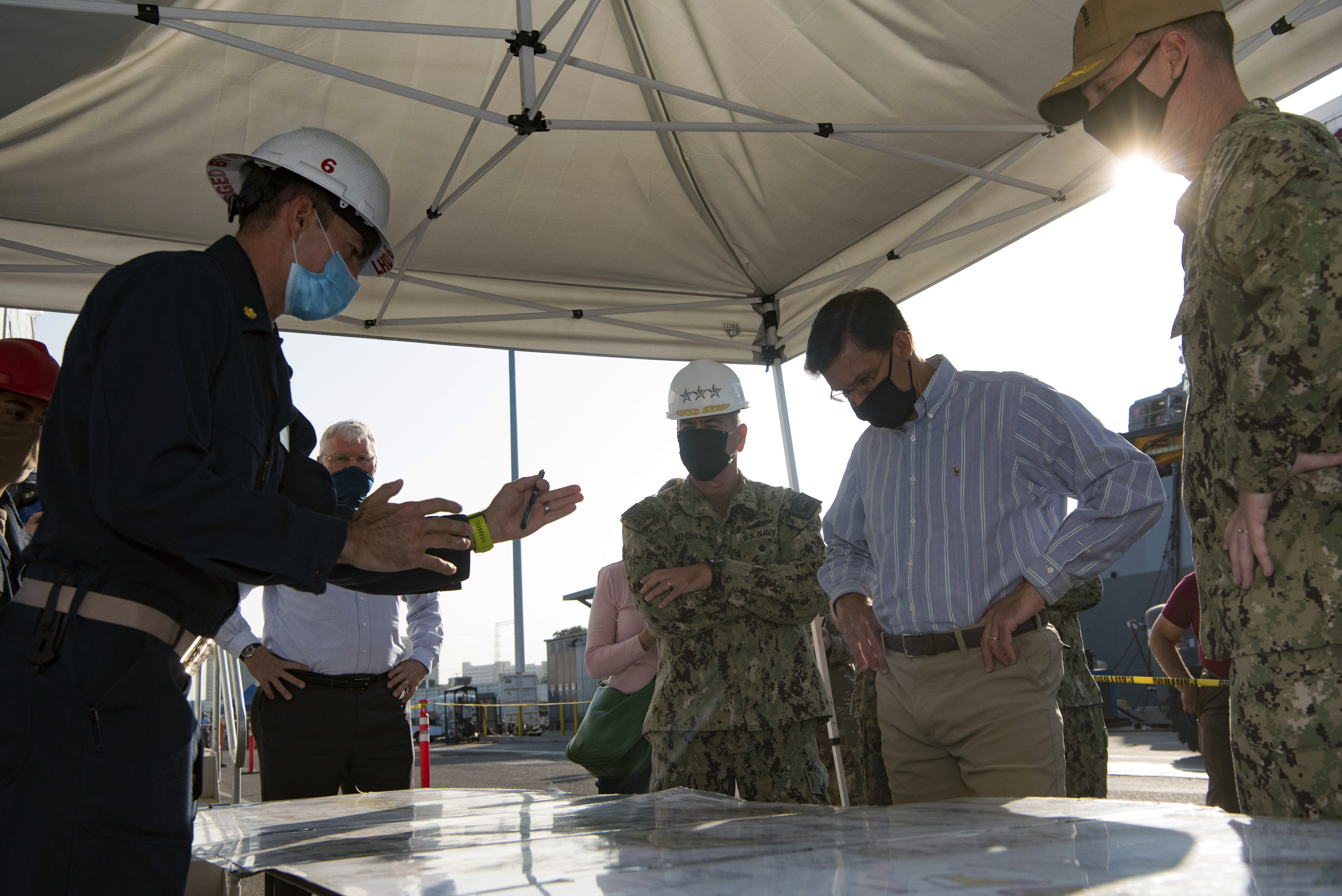
Defense Secretary Mark Esper visited the ship on Friday during a three-day trip to Los Angeles and San Diego. He toured the ship for about an hour, speaking with leadership and sailors on the crew who helped fight the fire.
Addressing the crew members who were on the pier at the end of his visit, Esper said he had recently visited the Navy’s boot camp in Illinois and was told “every sailor’s a firefighter. And I really didn’t understand it or appreciate it until I walked on that ship and talked to some of your colleagues. And it’s just incredible, the importance of the skills that you guys have learned.”
“Just to see the inside of that ship, it’s remarkable. But thanks to your efforts, your heroism and your bravery, you guys saved that ship. That’s something to think about the rest of your lives, so my hat’s off to you all, you’ve got my deepest respect for going in there, back and forth, day and night, day over day over day,” Esper continued.
“It’s just incredible. And when the local firefighters left, you guys hung in there. So thank you all very much for what you do, thanks for saving this ship, and we’re going to have a Bonhomme Richard for sure.”





